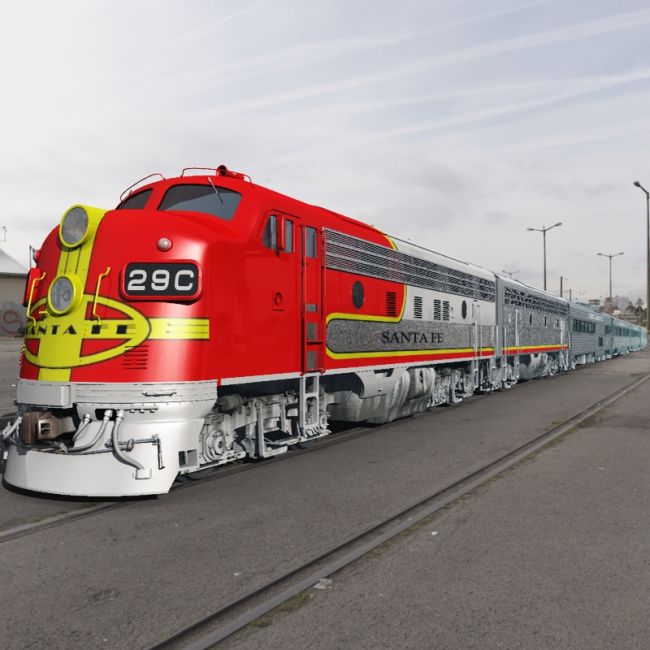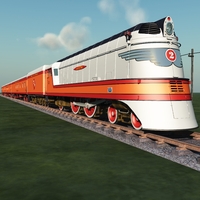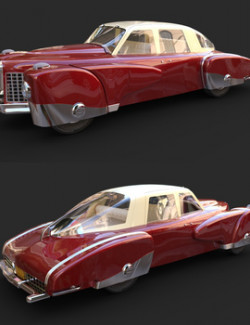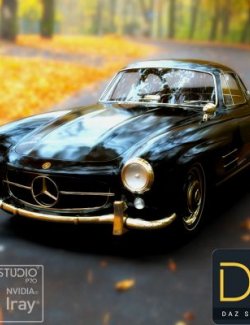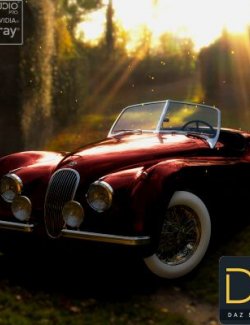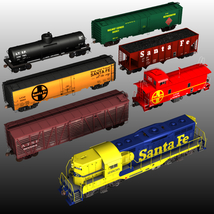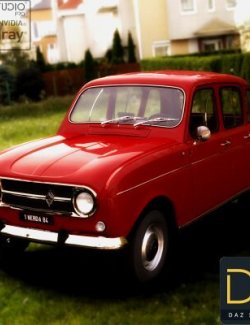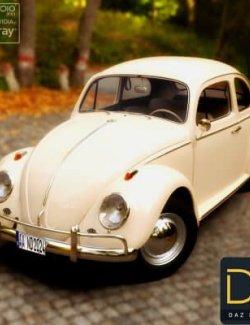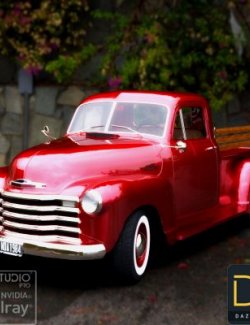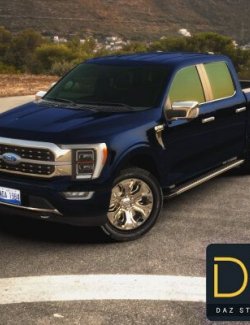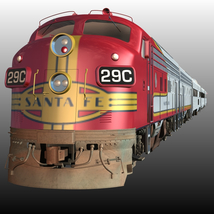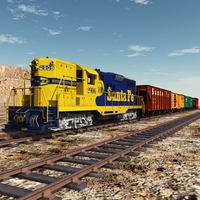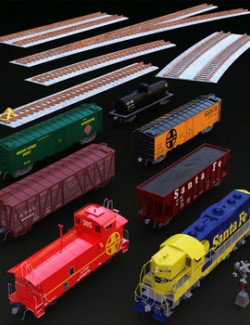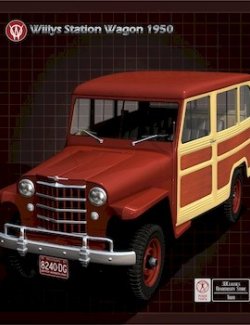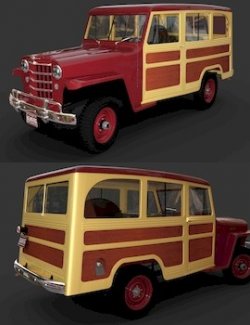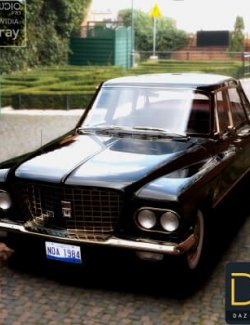Hignly detailed Bundle of 2 different locomotives and 3 different cars for Vue8 and greater.
The Super Chief was one of the named passenger trains and the flagship of the Atchison, Topeka and Santa Fe Railway. It was often referred to as "The Train of the Stars" because of the many celebrities who traveled on the streamliner between Chicago, Illinois, and Los Angeles, California.
The Super Chief was the first Diesel-powered, all-Pullman sleeping car train in America, and it eclipsed the Chief as Santa Fe's standard bearer. The extra-fare Super Chief-1 commenced its maiden run from Dearborn Station in Chicago on May 12, 1936. Just over a year later, in May 1937 the much-improved Super Chief-2 traversed the 2,227.3 miles (3,584.5 km) from Los Angeles over recently upgraded tracks in 36 hours and 49 minutes, averaging 60 mph (97 km/h) overall, and often reaching 100 mph (160 km/h).
On that day the Super Chief set a new standard for luxury rail travel in America. With only one set of equipment, the train initially operated once a week from both Chicago and Los Angeles. However, at the height of its popularity, and with added equipment, the trains of the Super Chief made daily departures from both ends of the line. Adding to the train's mystique were its gourmet meals and Hollywood clientele. When Amtrak took over operation of the nation's passenger service on May 1, 1971, it ended the 35-year run of the Super Chief on the Santa Fe, though Amtrak would continue to use the name along the same route for another three years.
The EMD F2, F3, F5 or F7 was a 1,500-horsepower (1,100 kW), B-B freight- and passenger-hauling diesel locomotive produced between 1945 and February 1953 by General Motors’ Electro-Motive Division. Final assembly was at GM-EMD's La Grange, Illinois plant. A total of 1,111 cab-equipped lead A units and 696 cabless booster B units were built. The F3 was the third model in GM-EMD's highly successful F-unit series of cab unit diesel locomotives, and it was the second most produced of the series. The F3 essentially differed from the EMD F2 in that it used the “new” D12 generator to produce more power, and from the later EMD F7 in electrical equipment. Some late-model F3s had the same D27 traction motors used in the F7, and were nicknamed F5 models.
Product requirements
- Products:
- PC or Mac and Vue 8 or greater ( at least 6 G0 ram )
